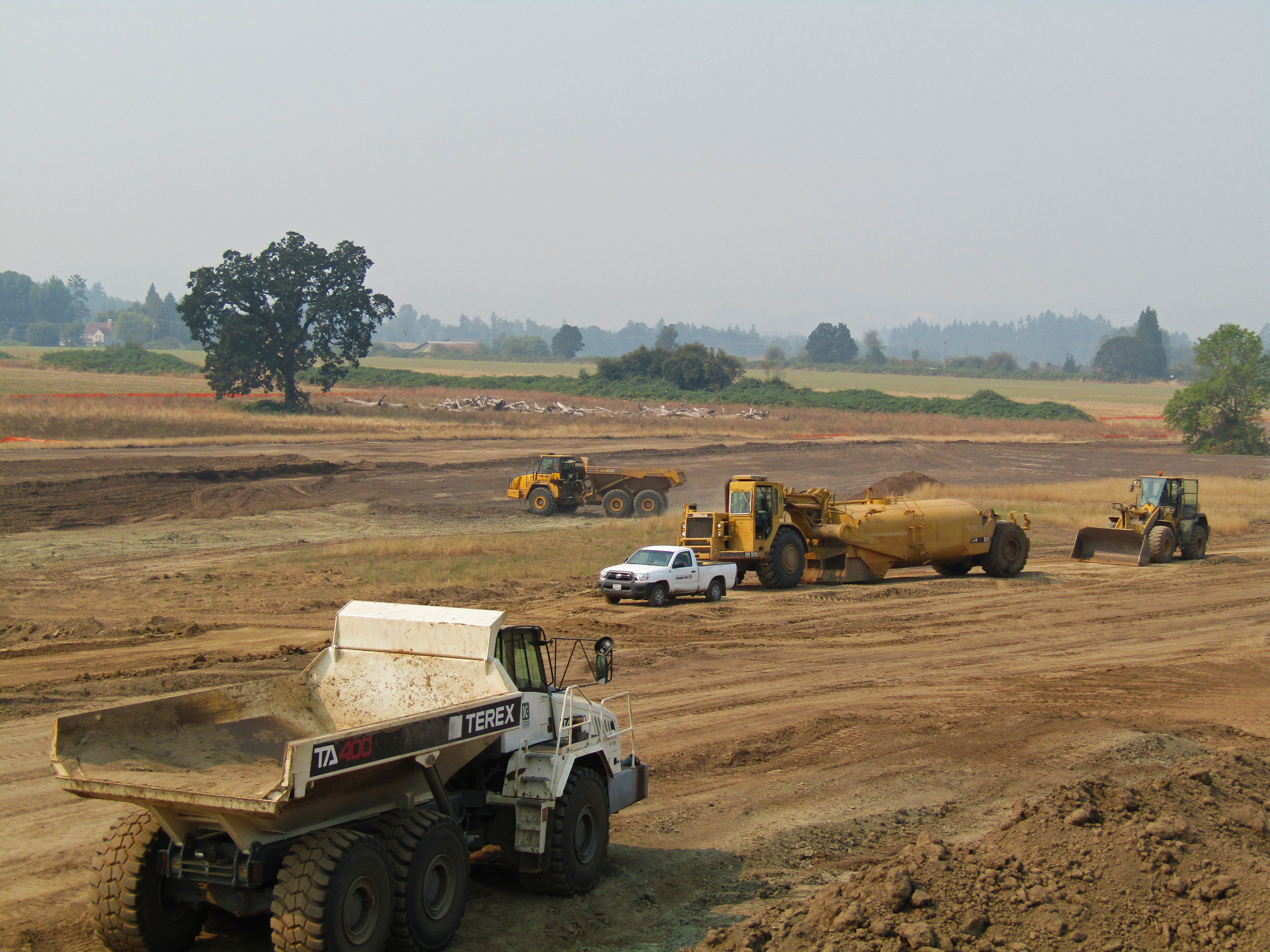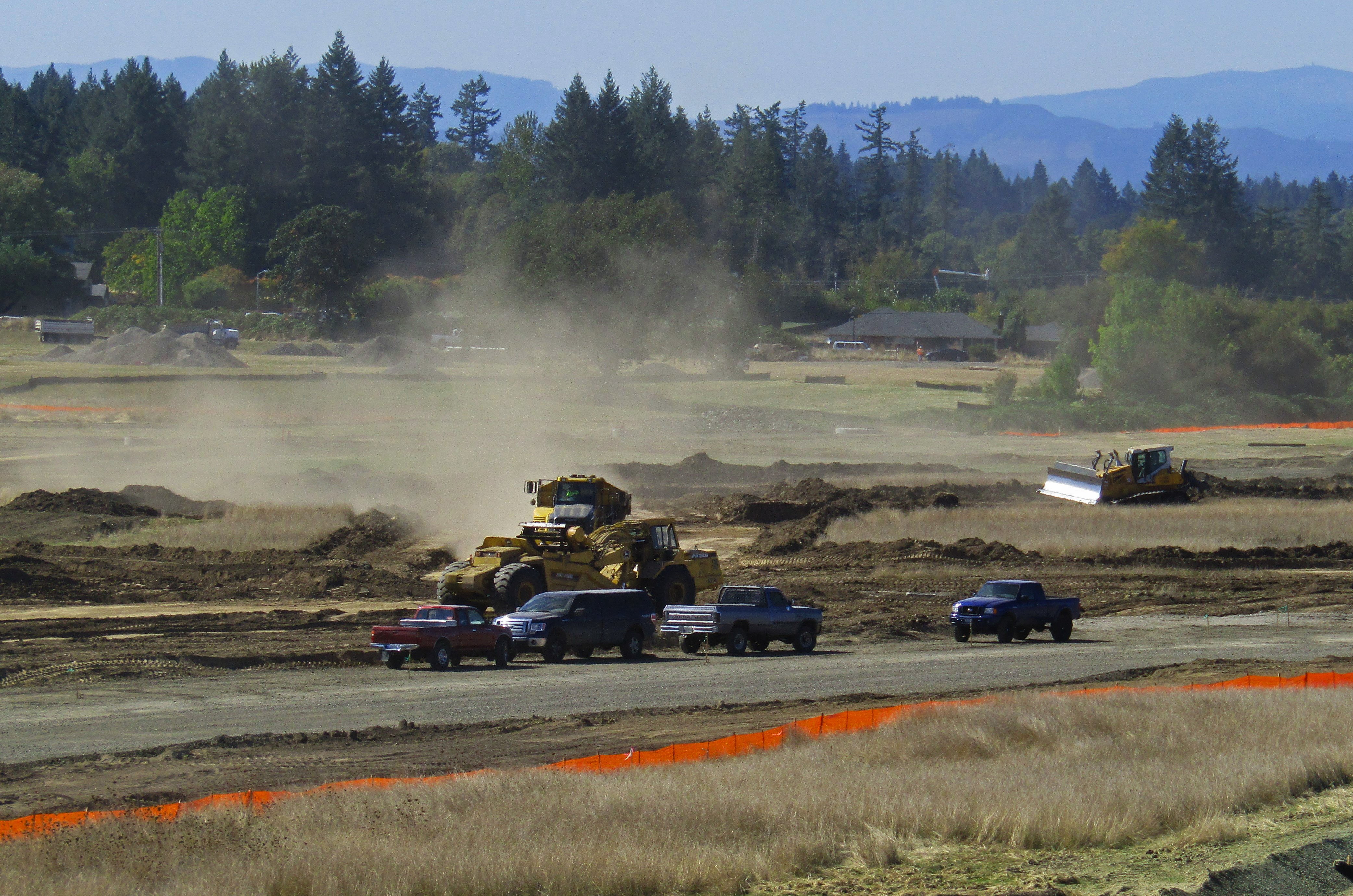
Big earthwork projects have a number of challenges; arguing over pay quantities shouldn’t be one of them. Unfortunately, owners who are not careful about how they structure payment for earthwork can find themselves in this situation. For those who manage projects that require significant earthwork, it’s all too common for the contractor to raise concerns over the pay quantities based on their cumulative truck count, but earthwork overruns can bust a budget very quickly. So, let’s take a look at some strategies to stop these requests before they arise.
One of the easiest ways to protect yourself is to simply structure the earthwork pay item as a lump sum instead of paid by the cubic yard. As long as the contractor has the digital terrain model (DTM) for the existing ground and the final surface, they can calculate the volume themselves to provide an accurate lump sum price. While this eliminates any arguments over pay quantities, there are some downsides.
For example, if the geotechnical report contained inaccurate assumptions for the depth of unsuitable topsoil strippings necessary, the resulting differing site conditions claim for additional earthwork would be negotiated through a change order, presumably at premium prices. The same can be said for trying to obtain a credit when quantities get reduced. In contrast, if paid by unit prices, the change in earthwork is handled simply by adjusting the total quantity paid. In addition, if you’re an owner who frequently procures projects with significant earthwork, having a historical record of past unit prices is very useful for accurate cost estimating. Finally, placing quantity variance risk on the contractor will result in additional contingency in the contractor’s bid price. After all, contractors don’t accept risk, they price risk.
Unit price payment can alleviate these downsides, but must be carefully structured to protect against quantity disputes. For projects whose finished surface is unlikely to be modified over the course of construction, such as a road, you can simply provide the calculated volume and include language indicating there will be no separate measurement for payment unless the design is modified. For projects that may experience modifications to their final surface, like multi-phased site developments, actual measurement of pay quantities is often the best way to handle the changing earthwork quantities.
Today’s technologies, like GPS based machine controls and unmanned aerial vehicles (UAV) can greatly simplify the process of obtaining accurate earthwork measurements, avoiding the rabbit-hole of contractor truck counts. Most large earthwork contractors now have sophisticated GPS based machine controls that guide the earth moving equipment to match the design DTM. In addition, these control systems can gather data and create DTM’s of the work in progress.
Owners can request this data and use tools like Global Mapper to verify monthly and final pay quantities. They may also want to perform some quality assurance checks on the contractor’s DTM to verify the data is reliable or perform more frequent checks if the contractor doesn’t possess machine controls capable of producing DTMs. This is where UAV-based DTM’s shine, especially on large sites. Fixed wing UAV’s can quickly and economically capture visual data of large sites which is then converted to a DTM using photogrammetry software.
Accurate DTM’s reduce pay quantity disputes to a math exercise. My experience so far is that when both parties are using the same data set to calculate quantities, disputes are non-existent.

Whether you choose lump sum or unit prices for your next large earthwork project, consider the pros, cons, and techniques covered here to minimize pay quantity disputes so you can focus on the more important portions of the work.
Have any questions?
Email me at rpalena@mackaysposito.com if you need help
deciding which option is the right one for your project.

